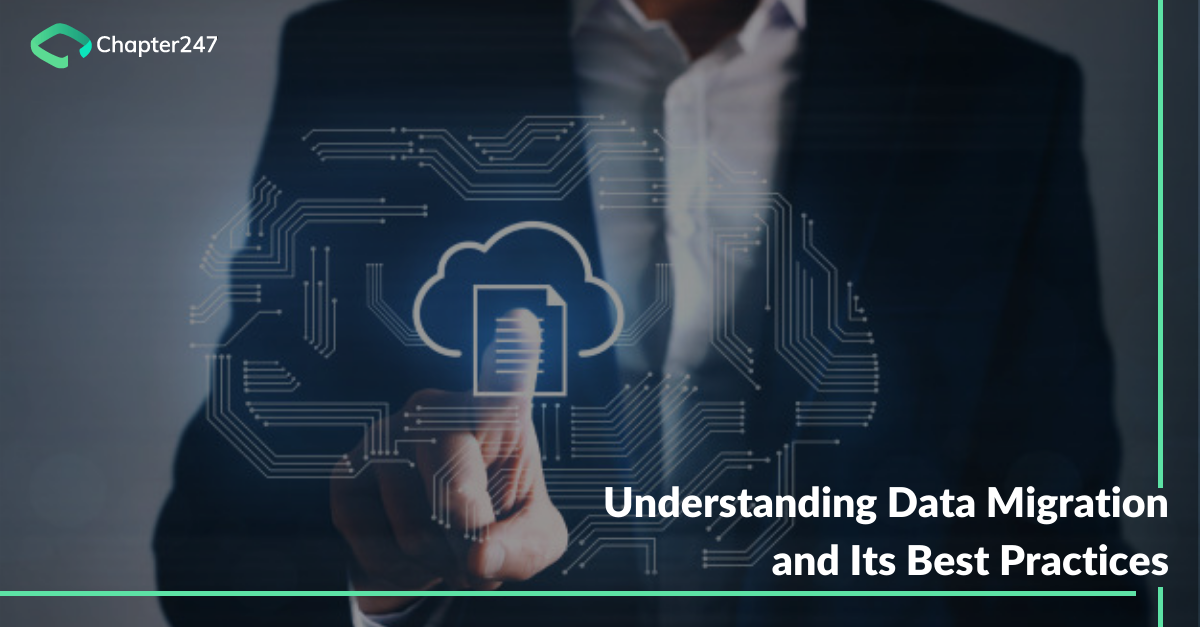Have you ever thought why Data Migration projects are infamous for their overriding budget and overrunning schedules? On the surface of it, data migration is perceived to be simple and usually, the prospect of successful data migration takes a back seat. Hence the migration analysis doesn’t get the yardage it actually deserves and teams that are not able to fully understand its implications, often see an impending disaster coming their way.
Approximately 70%- 90% of the data migration projects do not meet expectations due to budget or time overruns. While the statistic may not be very encouraging at first go, at any given time, two-thirds of Fortune 1000 companies are involved in some form of data migration or the other.
In this article, we will talk about successful data migration practices in general and also take a perspective on a successful cloud migration strategy.
What is data migration?
Data Migration is the process of transferring data from a source system to your specified target system. Data migration is extremely important because it is required to upgrade and consolidate servers and storage hardware. This will include data-intensive applications like data warehouses, data lakes, and even large scale virtualization projects. With data migration you can achieve several benefits:
- It will help you save on your overhead expenses
- You need to migrate itself speaks of the benefits of new technology that it will bring with it
- It is an essential thing to move all data into a single place thereby reducing the redundancies
- Data is the most susceptible to malicious attacks and with the database, upgrades come better security fixes solving this problem
Adopting cloud migration
One of the most radical trends in enterprise IT in recent times is cloud migration. Cloud service providers are constantly innovating to address concerns of security. Management concerns surrounding cloud adoption are also getting resolved and the assurance of a positive migration of workloads to the cloud is the most relevant thing today. The more popular approach is to move to the public cloud, but private clouds are rising in adoption and hybrid clouds are the new mantra. Digital transformation is one of the major drivers of cloud adoption across the world.
- According to Gartner, the worldwide public cloud services market is projected to grow 21.4 percent in 2018 to total $186.4 billion, up from $153.5 billion in 2017
- The 2018 State of the CIO survey results from CIO.com list cloud computing as ranking third highest priority for IT investment amongst CIOs
- Forrester predicts that more than 50% of global enterprises will rely on at least one public cloud platform to drive digital transformation and delight customers
One simply can’t expect magic to spell out by lifting and shifting their workloads to the cloud. The move to the cloud is a strategic one and can’t happen overnight. Compared to rolling out new services, migrating existing workloads and data to the cloud maybe even more challenging. But with careful planning, training, backup, benchmarks, and performance service levels, data cloud migration becomes simpler and typically happens in phases. Increasingly, organizations are migrating some or all of their data to the cloud in order to increase their speed to market, improve scalability, and reduce the need for technical resources.
The right cloud integration tools will help customers to accelerate cloud-migration projects with an absolutely highly scalable and secure cloud integration platform-as-a-service (iPaaS). Our suite of open-source, cloud-native data integration tools will enable drag-and-drop functionality to ease out complex mapping. Our solutions are cost-effective thanks to our open-source foundation.
Best practices for data migration projects
The data migration process is complex and cumbersome requiring great effort, a significant amount of planning, and resources to ensure that the transition is seamless. Successful data migration needs intermittent validations and testing throughout. But that is possible only when you follow the best practices across the different phases of data migration like design, extraction, verification, and much more. Following these best practices will ensure that the data migration is completed on-time, within the scope, and dot on budget.
1.Mapping out a migration strategy
Everything after all boils down to planning and this is the best practice you can’t ignore. Chalking out a strategy gives identity to business motives and use cases for migrating. We believe that the best migration strategy is to migrate in phases or conduct a pilot light migration in which you can start with the least business-critical workloads that can give you the clout to move further with complex features. You also could possibly take inspiration from Gartner’s five R’s that you showcase your options for migrating applications lets say to the cloud. The options listed are: rehost on infrastructure as a service(IaaS), refactor for the platform as a service (PaaS), revise for IaaS or PaaS, rebuild on PaaS or replace with software as a service (SaaS)
2.Analyzing data complexities
How complex is the data? All data migration projects have one thing in common, they all have unforeseen issues. Hence the success or the failure of the project depends on how effectively your opted approach responds to these issues. Evaluate and analyze the different forms of organizational data. Understand what data you are migrating, where it is situated, how it is stored, and what form it will need to take when it arrives at the destination.
3.Fixing data standards
Once you have analyzed the data complexity in hand, it is important to have a comprehensive set of data standards in place. When you establish these data standards it helps you to identify problem areas much earlier. This ensures that you are not faced with multiple issues in the final stage. Data is nothing but an entity that changes with time, and establishing a set of regulations and mandates will only help to develop, define, and recommend definitions in the organization to support data consolidation. This will ensure more successful use of data in the future.
4.Clearly define rules
If the business rules are well charted out the migration will ensure compliance and compatibility with the current data migration project as well as the future requirements. They should be compatible which goes without saying but they also should enable you to move data in a systematic manner by enforcing data migration policies.
5.Establishing roles for data governance
It is very important to clearly define who manages the information and who will be responsible for supporting data quality, its use, and accessibility. This will ensure that the entire project of data migration is supported by perfect accountability. The main motive of doing it is to ensure that the quality and usability of data improves. The best practice we would recommend is to establish data governance roles by setting up a governing body or council where project managers could possibly identify all possible roles, assign responsibilities to all the members who are involved.
6.Quality assessment
Data migration is not just about data movement from one point to another because it is also about the quality. When data is migrated from one system to another, a thorough check of data quality is necessary to ensure superior data quality once the new database sets in. It is important to conduct a data quality assessment to detect the quality of the data into consideration, build firewalls to filter and clean the data by eliminating duplication.
7.Identifying the right kind of tool
The first question you need to ask is how flexible are the data migration tools? Do these tools provide a proper fit with the stakeholders of the project? Identifying the right tools to carry out the migration process which will be scalable, require minimum technical know-how, and be intuitive is all that the business requires for a collaborative data migration effort.
8.Risk management system
Data loss is inevitable during data migration. What we usually recommend for this is to build a test environment and test the migration process to see if there are any loopholes exposed and what corrective measures can be adopted. Do not rush into deploying your new system immediately because it also carries the not-yet optimized drivers as bugs. Use Ad Hoc deployment tools that can back-up data and settings and also manage the data migration holistically in a centralized console.
9.Migration test for validation
This step is extremely essential to validate the integrity of the migrated data. It has to be seen if the migrated data is accurate, is in the expected format, and also if the entire process has been a well-executed one. Post data migration, you have to ensure that every stage of the data migration process is documented. This will help in maintaining a clear audit trail to meet regulatory compliance and robust documentation will ensure you have something to fall back on.
How can Chapter247 help?
We are a leading tech company helping businesses leverage their performance by building custom software solutions including database migration service. We have a team of skilled professionals who can help you in successfully migrating databases starting from the assessment of existing databases and making a definite roadmap for database migration.
Our systems ensure that all steps are taken to avoid any data loss in the migration phase. We also provide consultative services as to which technologies are best suited for the type of database your company owns. After successfully migrating, we also validate the data stored and do necessary repairs if any discrepancies are encountered while performing the migration process. Contact us now.







